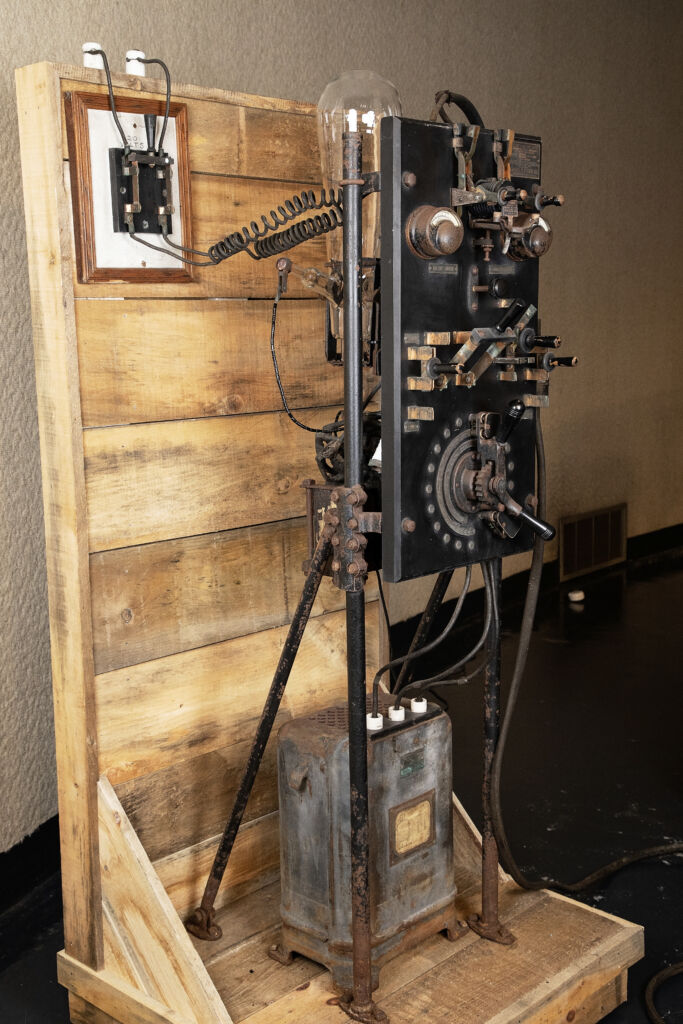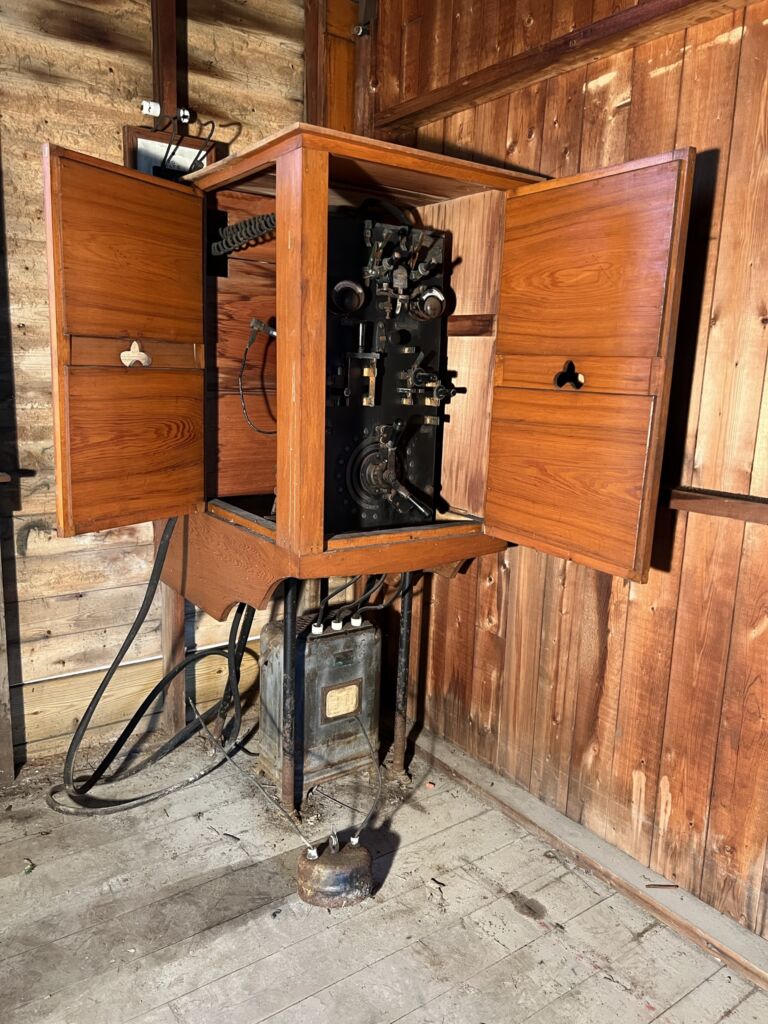
CHARGING AHEAD: THE MERCURY ARC RECTIFIER
Jennifer Madden, Director of Collections and Exhibitions
 Although commonly considered a thoroughly modern invention, electric cars have been around for a long time. In fact, the first electric car was made in Scotland almost two hundred years ago! Of course, that vehicle was not any way practical for transportation, and it was more than a half-century before electric cars that could work in “real world” conditions were developed.
Although commonly considered a thoroughly modern invention, electric cars have been around for a long time. In fact, the first electric car was made in Scotland almost two hundred years ago! Of course, that vehicle was not any way practical for transportation, and it was more than a half-century before electric cars that could work in “real world” conditions were developed.
When the production of automobiles really got under way in the 1890s and the early 1900s, electric vehicles were as popular as gasoline or steam autos. They were cleaner, quieter, and easier to start and operate than gas or steam cars. They were especially popular with urban women drivers who had access to electricity and didn’t want the bother of hand cranking a gasoline-fueled car. Women also had greater independence in electric cars. Since hand-cranking the engine to start the car wasn’t necessary on electric cars, women could drive where they pleased without being accompanied by a chauffeur.
Of course, if you owned an electric car, you needed some way to charge it. That’s where this device, called a mercury arc rectifier comes in. Just like today, the power that was delivered to homes was alternating current (or AC), but direct current (DC) was required to charge electric car batteries. So, a mercury arc rectifier’s job was to transform the AC to DC.

Until the gift of this mercury arc rectifier to Heritage Museums & Gardens in 2022, it was still installed in its original location in Hull, Massachusetts where it had been for over one hundred years. In the early twentieth century, Daniel and Elizabeth Goodnow owned a waterfront summer home in Hull with an adjacent barn. This mercury arc rectifier was installed in the barn to charge the 1908 Bailey electric car that belonged to their 32-year-old daughter Fannie.

Fannie would have undertaken several steps to get her mercury arc rectifier to work. After adjusting the voltage with the selector to the correct settings for the Bailey, she would open the AC switch line, set the current to high, then plug in the car. The next step involved flipping the main wall switch to apply AC power to a small pool of mercury in a glass tube on the back of the rectifier. The electricity caused the mercury to vaporize, and it emitted a purplish glow. Only the positive portion of the electricity cycle can pass through vaporized mercury which creates the direct current needed to charge car batteries. After a quick check of the voltmeter and amperage to be sure all was going well, Fannie would leave the battery to charge for about twelve hours.
The age of mercury arc rectifiers ended in the 1960s with the development of solid-state devices. However, some mercury arc rectifiers were in use in the New York City subway system until the 1990s! Nowadays, this same task is achieved using a semiconductor diode the size of a quarter.
2C7A8E4 THE G E MERCURY ARC RECTIFIER – American Home charger for an electric vehicle in 1910








